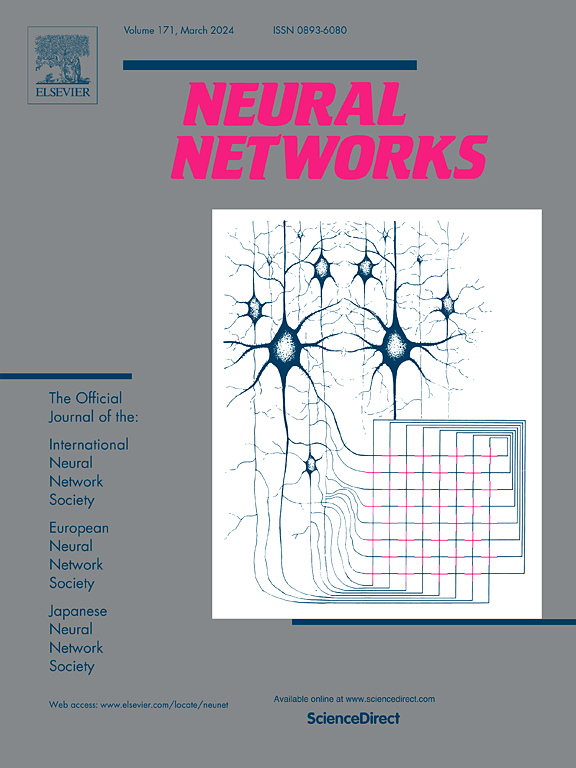Structural consistency learning for unsupervised domain adaptive object detection
IF 6.3
1区 计算机科学
Q1 COMPUTER SCIENCE, ARTIFICIAL INTELLIGENCE
引用次数: 0
Abstract
Unsupervised domain adaptive object detection aims to facilitate the transfer of trained object detection models from the source domain to an unlabeled target domain. Although existing methods have made strides in feature alignment through adversarial learning, they tend to ignore the issue of category imbalance, leading to inadequate generalization of the model for rare categories. In addition, they fail to adequately address the background information embedded in the features, limiting the extraction of crucial object features. In order to overcome these limitations, this work proposes a structural consistency learning framework for unsupervised domain adaptive object detection. The framework enhances foreground feature representation through an Enhanced Dual Attentional Feature Alignment (EFA) mechanism and accomplishes comprehensive cross-domain feature alignment through the Structural Feature Consistency Module (SFC). The EFA introduces an attention mechanism in the image-level and instance-level feature alignment phases, enhancing the recognition of foreground objects. The SFC integrates information from multiple batches to obtain global prototypes and constructs a structure matrix based on the distances between these global prototypes. This process comprehensively reduces the structural differences between the source and target domains. The effectiveness of the approach has been validated through comprehensive experimentation on multiple cross-domain object detection benchmark datasets. The method achieves significant performance gains over current state-of-the-art techniques.
无监督域自适应目标检测的结构一致性学习
无监督域自适应目标检测旨在将训练好的目标检测模型从源域转移到未标记的目标域。尽管现有的方法已经通过对抗学习在特征对齐方面取得了长足的进步,但它们往往忽略了类别不平衡的问题,导致模型对罕见类别的泛化不足。此外,它们不能充分处理嵌入在特征中的背景信息,限制了关键目标特征的提取。为了克服这些限制,本工作提出了一种用于无监督域自适应目标检测的结构一致性学习框架。该框架通过增强的双注意特征对齐(EFA)机制增强前景特征表示,并通过结构特征一致性模块(SFC)实现全面的跨域特征对齐。EFA在图像级和实例级特征对齐阶段引入了注意机制,增强了对前景目标的识别。SFC将多个批次的信息进行集成,得到全局原型,并根据这些全局原型之间的距离构建结构矩阵。该过程全面地减少了源域和目标域之间的结构差异。通过在多个跨域目标检测基准数据集上的综合实验,验证了该方法的有效性。与目前最先进的技术相比,该方法实现了显著的性能提升。
本文章由计算机程序翻译,如有差异,请以英文原文为准。
求助全文
约1分钟内获得全文
求助全文
来源期刊

Neural Networks
工程技术-计算机:人工智能
CiteScore
13.90
自引率
7.70%
发文量
425
审稿时长
67 days
期刊介绍:
Neural Networks is a platform that aims to foster an international community of scholars and practitioners interested in neural networks, deep learning, and other approaches to artificial intelligence and machine learning. Our journal invites submissions covering various aspects of neural networks research, from computational neuroscience and cognitive modeling to mathematical analyses and engineering applications. By providing a forum for interdisciplinary discussions between biology and technology, we aim to encourage the development of biologically-inspired artificial intelligence.
 求助内容:
求助内容: 应助结果提醒方式:
应助结果提醒方式:


